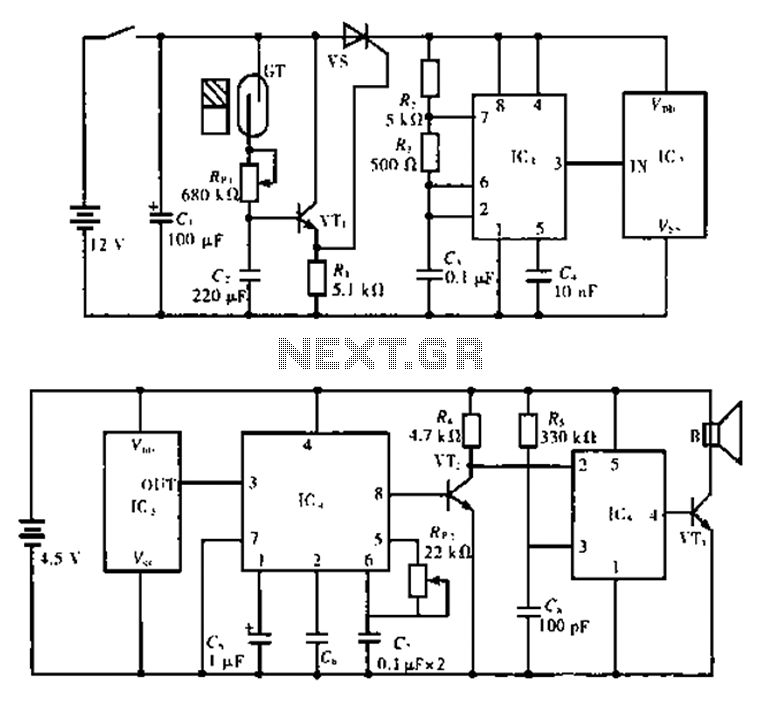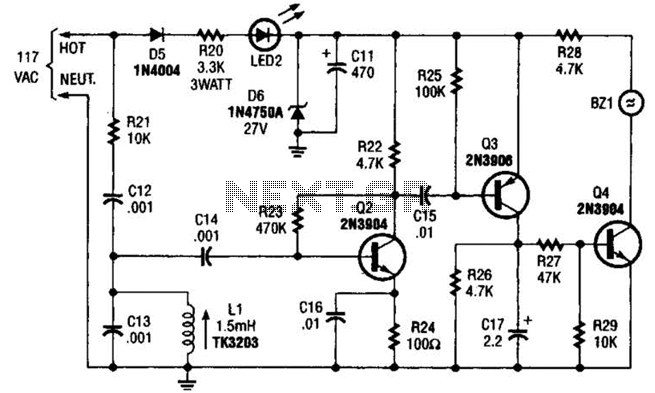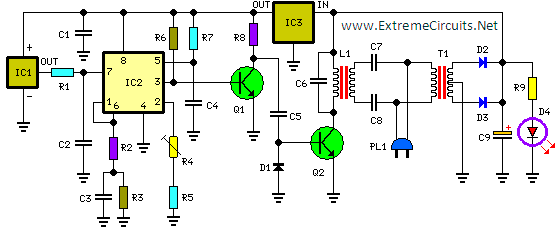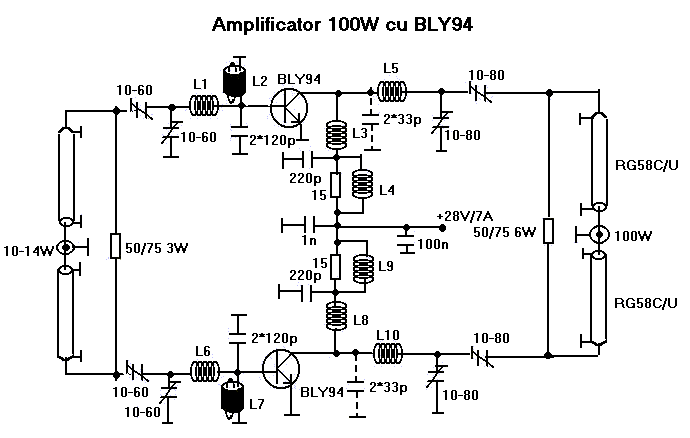
TDA1013B - 4W Audio Amplifier Circuit
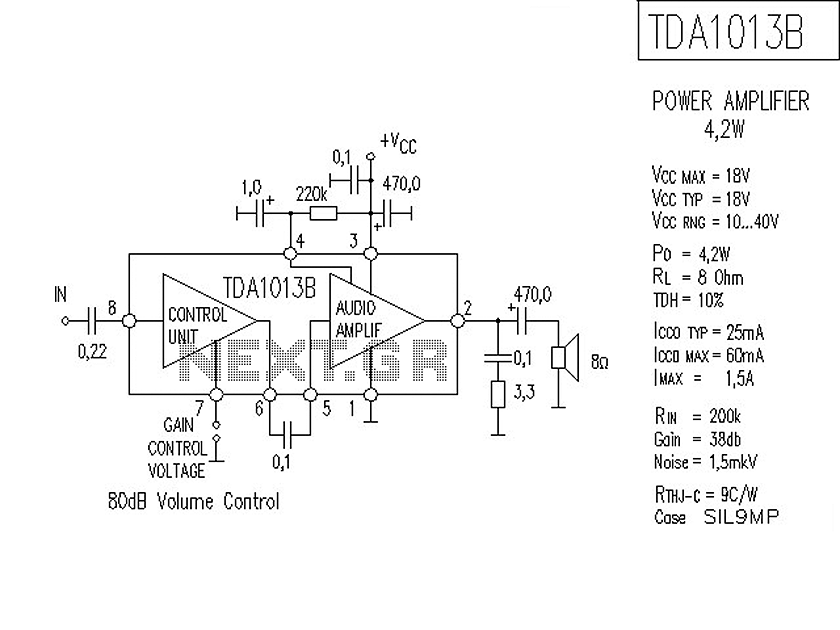
The following is a circuit for a 4-watt audio amplifier. The amplifier utilizes an integrated audio amplifier chip, TDA1013B, which is capable of delivering an audio power output of up to 4W at an 8-ohm load. Its wide supply voltage range makes this amplifier circuit suitable for use in both mains and battery-powered devices, such as television receivers and other audio equipment. This amplifier circuit can be applied in various scenarios, including car audio systems, home theater systems, personal audio systems, and public address systems. The DC volume control stage features a logarithmic control characteristic with a range exceeding 80 dB, controlled by a DC voltage variable between 2V and 6.5V. The audio amplifier has a well-defined open-loop gain and a fixed integrated closed-loop configuration. This device requires only a few external components, providing both stability and performance.
The 4-watt audio amplifier circuit based on the TDA1013B chip is designed for efficient audio amplification in a variety of applications. The TDA1013B is a robust integrated circuit that simplifies the design process by integrating many necessary functions, including power amplification, gain control, and feedback mechanisms. The output power of 4 watts at an 8-ohm load ensures sufficient volume for most consumer audio applications.
The power supply for this amplifier can vary widely, accommodating both mains and battery sources, which enhances its versatility. The circuit is engineered to maintain performance across different power conditions, making it suitable for portable devices as well as fixed installations.
The logarithmic DC volume control allows for precise adjustment of audio levels, which is particularly beneficial in environments where sound levels need to be adjusted frequently or finely tuned. The control voltage range of 2V to 6.5V provides flexibility in integration with other control systems, such as microcontrollers or digital signal processors.
In terms of external components, the circuit is designed to minimize the number required for operation, which aids in reducing the overall footprint and complexity of the design. The stability provided by the integrated closed-loop configuration ensures consistent performance across varying loads and supply voltages, making it a reliable choice for engineers and designers.
Overall, this 4-watt audio amplifier circuit is ideal for a wide range of audio applications, offering a balance of power, efficiency, and ease of integration for both professional and consumer markets.The following a circuit of 4 watt audio amplifier. The amplifier is using on integrated audio amplifier chip, TDA1013B which is able to gained the audio power output up to 4W at 8 ohm loads. The wide supply voltage range makes this amplifier circuit ideal for applications in mains and battery-fed apparatus such as television receivers and record p
layers. This amplifier circuit can be used in a variety of applications such as car audio systems, home theater systems, personal audio systems, public address systems etc. The DC volume control stage has a logarithmic control characteristic with a range of more than 80 dB; control is by means of a DC voltage variable between 2 and 6.
5 V. The audio amplifier has a well defined open loop gain and a fixed integrated closed loop. This device requires only a few external components and offers stability and performance. 🔗 External reference
The 4-watt audio amplifier circuit based on the TDA1013B chip is designed for efficient audio amplification in a variety of applications. The TDA1013B is a robust integrated circuit that simplifies the design process by integrating many necessary functions, including power amplification, gain control, and feedback mechanisms. The output power of 4 watts at an 8-ohm load ensures sufficient volume for most consumer audio applications.
The power supply for this amplifier can vary widely, accommodating both mains and battery sources, which enhances its versatility. The circuit is engineered to maintain performance across different power conditions, making it suitable for portable devices as well as fixed installations.
The logarithmic DC volume control allows for precise adjustment of audio levels, which is particularly beneficial in environments where sound levels need to be adjusted frequently or finely tuned. The control voltage range of 2V to 6.5V provides flexibility in integration with other control systems, such as microcontrollers or digital signal processors.
In terms of external components, the circuit is designed to minimize the number required for operation, which aids in reducing the overall footprint and complexity of the design. The stability provided by the integrated closed-loop configuration ensures consistent performance across varying loads and supply voltages, making it a reliable choice for engineers and designers.
Overall, this 4-watt audio amplifier circuit is ideal for a wide range of audio applications, offering a balance of power, efficiency, and ease of integration for both professional and consumer markets.The following a circuit of 4 watt audio amplifier. The amplifier is using on integrated audio amplifier chip, TDA1013B which is able to gained the audio power output up to 4W at 8 ohm loads. The wide supply voltage range makes this amplifier circuit ideal for applications in mains and battery-fed apparatus such as television receivers and record p
layers. This amplifier circuit can be used in a variety of applications such as car audio systems, home theater systems, personal audio systems, public address systems etc. The DC volume control stage has a logarithmic control characteristic with a range of more than 80 dB; control is by means of a DC voltage variable between 2 and 6.
5 V. The audio amplifier has a well defined open loop gain and a fixed integrated closed loop. This device requires only a few external components and offers stability and performance. 🔗 External reference
